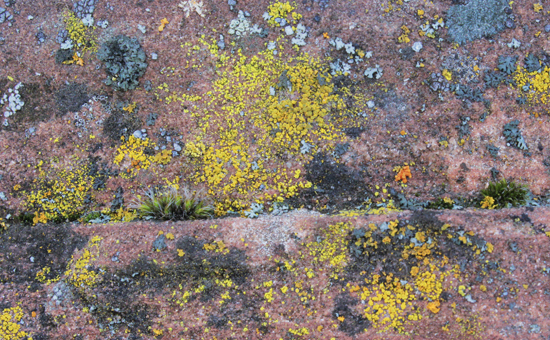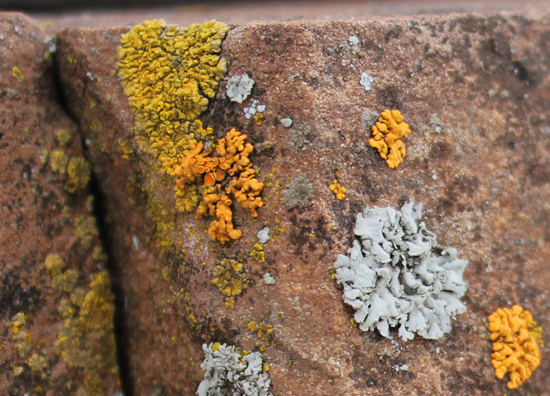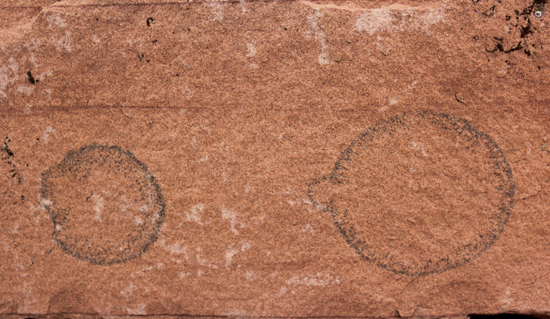Time to get enLichened
Submitted February 20, 2013 at 8:12 AM
Inconspicuous but ubiquitous, lichens exist in every one of our gardens in myriad colors and forms. Winter is a great time to notice these often overlooked treasures peaking out from rocks, soil, and branches throughout the garden.

We spotted 8 different lichens in this photo includin; Candelaria sp. (yellow), Caloplaca sp. (orange), Physica sp. (leafy gray-blue), Aspicilia spp. (white, brown, and black), and two unknowns (gray and black). The two green bunches on the ledge are bryophytes and are less than a half inch tall.

Yellow Candelaria sp. and orange Xanthoria sp. grow along the leafy gray Physica sp.. Physica lichens live in the Mojave desert in temperatures above 120F and in Antarctica at -70F where they can photosynthesize under over a foot of snow.
 Lecanora sp (green) JWB13.jpg)
Our great wall offers a beautiful display of lichens, including the orange Caloplaca sp. and the lovely green Lecanora sp. which is used in toiletries including perfumes, toothpastes and sunscreens.
 Aspicilia (gray black) JWB13.jpg)
Sandstone blocks make a welcoming home for the gray and black Aspicilia sp. lichen that has been used for centuries to create a red-brown dye in Europe.
 JWB13.jpg)
A white Aspicilia sp. grows with the brown Circinaria sp. which is related to the lichen thought to be manna from the Bible and Koran.
 Candelaria sp (yellow) SA13.jpg)
Xanthoria sp. and Candelaria lichens decorate our oak trees in a brilliant display of orange and yellow. Lichens are often mistaken for a disease on trees, but they are not harmful.
 Acarospora sp (white) SA13.jpg)
Here the gray and black Amandinea sp. can be seen competing for territory with a bright white Acarospora sp. Many lichens conduct "warfare" in which offspring are dispersed to nearby lichens, where they parasitize or compete to overtake the lichen they land on.

An unknown lichen creates interesting black circular patterns. Lichens are notoriously difficult to identify and offer a wealth of opportunities to those who want to study and enrich the body of knowledge on these amazing life forms.






